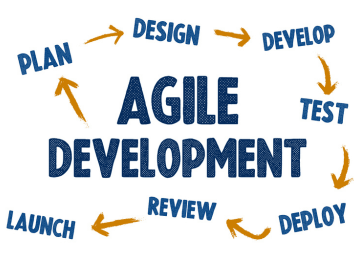Agile development
Web development
Software development
DevOps practices
Product strategy
Discovery phase
Performance optimization
How Agile Development Transforms Web Development Services
Iliya Timohin
2024-11-06
Agile development has redefined the landscape for web development services, enabling teams to respond quickly to changes and deliver software that better meets client needs. Unlike traditional methods, where lengthy planning phases delay real progress, Agile encourages iterative progress through consistent feedback and adaptation. In the context of web development, this means faster updates, improved user experiences, and software that stays relevant to evolving requirements. Agile’s incremental approach enhances collaboration and communication, bringing development teams and stakeholders closer together to align on the end goal and achieve it more effectively.

Benefits of Scrum and Kanban for a Software Development Company
Scrum and Kanban are two popular Agile methodologies that offer unique advantages for any software development company. Scrum focuses on time-boxed "sprints," typically lasting two to four weeks, in which the team sets specific goals and works toward them with a high level of discipline. This approach is particularly effective for projects where requirements may evolve, as regular check-ins allow the team to quickly adapt. Kanban, on the other hand, is more fluid, allowing teams to prioritize tasks as they come in and enabling continuous delivery. This flexibility is invaluable for projects with dynamic requirements, where priorities can shift.
For a software development company, using Scrum and Kanban can streamline workflows, reduce bottlenecks, and improve team morale. When these frameworks are applied correctly, teams can deliver software that meets customer expectations faster, enhancing productivity and client satisfaction.
Why Custom Software Development Thrives with Agile Methodologies
Custom software development, by nature, requires a high degree of adaptability, as each project comes with unique requirements and constraints. Agile methodologies are ideal for these scenarios, providing a structure that supports frequent updates and user feedback. Instead of following a rigid plan, Agile encourages developers to adapt as they go, ensuring that the software evolves in response to real-world feedback rather than hypothetical assumptions.
With Agile, a custom software development team can work closely with the client, iterating based on direct input. This results in a final product that is tailored to the client’s specific needs, improving usability and client satisfaction. The Agile process also means developers can spot potential issues early, minimizing the risk of costly changes or delays further down the line.
Integrating DevOps in Agile Software Development for Enhanced Efficiency
Integrating DevOps within Agile software development combines the flexibility of Agile with the automation and operational efficiency of DevOps. This integration can significantly improve the speed and quality of software delivery. DevOps emphasizes automation in testing, deployment, and monitoring, which fits seamlessly with Agile’s iterative cycles. Continuous integration and continuous delivery (CI/CD), core practices of DevOps, enable teams to release updates more frequently and consistently, enhancing software reliability and reducing downtime.
For a software development company, merging Agile with DevOps facilitates smoother workflows, making it easier to catch and resolve issues before they reach end users. By automating repetitive tasks, developers can focus on more complex aspects of development, driving innovation and productivity. Together, Agile and DevOps create a development environment that is both fast-paced and high-quality, delivering software that meets market demands.
The Role of Iterative Development in Successful Software Development Projects
Iterative development, a central tenet of Agile, involves building software in small, manageable pieces. This method allows development teams to refine and improve software continuously. Each iteration delivers a functional part of the software, which can be tested and reviewed to identify areas for improvement. This process ensures that the software stays aligned with business objectives, adapts to new requirements, and mitigates the risk of large-scale failures.
For web development services and custom software development alike, iterative development is essential to meet the needs of end users effectively. By continuously refining the product through testing and feedback, teams can deliver a robust, user-centric solution. Iterative development fosters a culture of continuous improvement, reducing errors and enhancing the quality of the final product.

Conclusion
In a fast-paced digital landscape, Agile development offers the adaptability and efficiency needed to meet the demands of software development projects. From the flexibility of Kanban and structure of Scrum to the collaborative advantages of integrating DevOps, Agile methodologies can transform how a software development company delivers value to its clients. By focusing on iterative development and continuous feedback, companies can create software that is not only high-quality but also aligned with user needs and market demands.
Implementing Agile done right requires commitment to its core principles—communication, collaboration, and adaptability. By following these principles, both companies and individuals can apply Agile in ways that drive real, measurable results. Whether you’re delivering web development services or custom software development solutions, Agile methodologies provide the roadmap to a successful project.